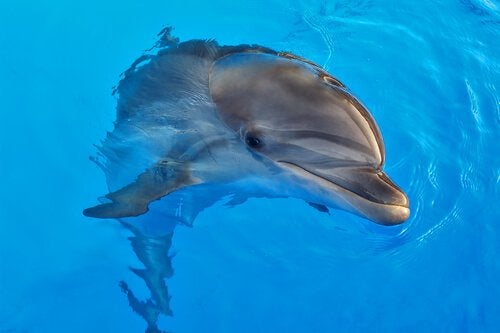Animal therapies have proven to be very useful in alleviating symptoms of various types of diseases and pathologies, including dolphin therapy, which is used to treat people with physical or mental disorders, and dolphin-managed therapy is performed in specialized centers or in areas classified as water parks. , where doctors and psychologists assist the dolphin and the patient.
According to advocates of this practice, therapy is recommended for its calming effects, as well as promoting the development of mental activity in sick people.
- Dolphin therapy involves a patient.
- A dolphin (which is usually a “bottle nose”) and a team.
- Usually composed of psychologists and/or doctors.
- It is therefore an aquatic therapy in which sensory activity is accentuated.
It usually applies to children with particular characteristics, such as autism or motor disorders, however, this type of therapy is also practiced in adults diagnosed with depression or post-traumatic stress disorder.
Therapy has different forms, durations and places, there are water parks, for example, that practice this type of therapy as part of individual and personalized interaction programs (according to the needs of children), other centers specialize in different therapies, including dolphin treatment. In some centers, even the program is developed in a virtual way, thanks to recent access to virtual reality.
This therapy was born from English studies with autistic children who benefited from swimming with dolphins. Later, U. S. physician John C. Lilly conducted experiments on dolphins with children with mental disorders. Through a subsequent encephalogram, Lilly determined that her language, humor and movements benefited from this experience.
Similarly, scientist David Cole attributed the dolphin sound to ultrasonic frequencies that stimulate the central nervous system.
On the other hand, there are other experiments that link this cetacean communication system to the human neural network.
In addition to those already described, dolphin therapy has several advantages, according to its advocates, including the promotion of endorphin production by the action of ultrasonic waves, which greatly affects the patient’s mood, an action that would also help alleviate attention deficit. or anxiety disorders. In terms of physical benefits, the union of the aquatic environment and the presence of the animal can help soothe pain caused by physical injuries or the aftermath of addiction to different drugs.
In any case, the benefits are largely related to mental, emotional and physical well-being. Contact with animals has been shown to help treat any type of intellectual, physical or social problem, so it is very common to find dogs in the centers where these programs are developed. Animal affection has also been shown to benefit children. In addition to giving them a sense of responsibility, the animal improves its empathy and is a source of unconditional affection.
This type of therapy is not free from controversies and disagreements between two main groups:
In any case, we should not underestimate that contact with animals benefits us, in a way, spiritually and emotionally, although it is difficult to accurately measure the impact of this contact, the results obtained so far are very positive.

